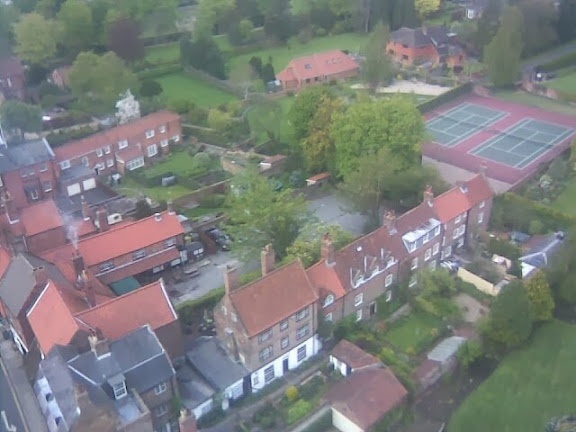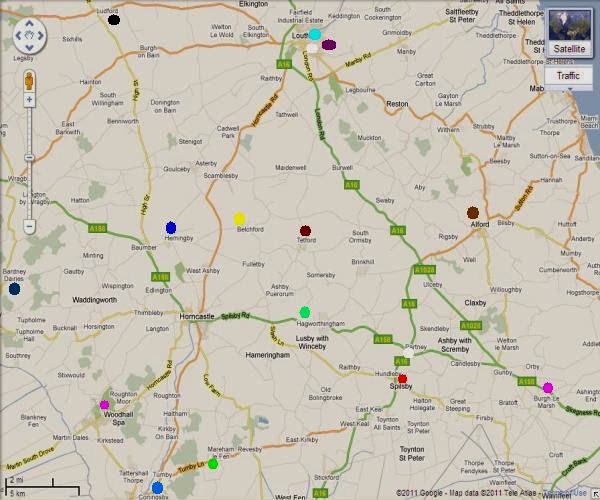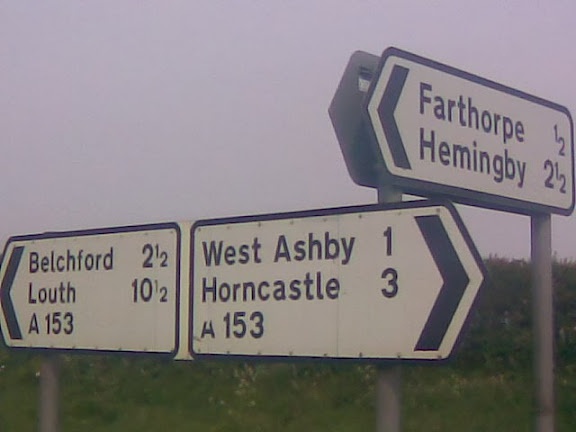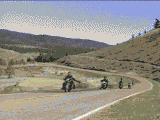Google can do alot of things with it's map interface, but struggles to sift plain town websites from businesses or, for example 
Louth is by far the largest town, followed by Horncastle, then probably Spilsby. All three used to have their own railway station. Louth is often heralded as a shopping destination; with more enforcement to make the through traffic lighter, the experience would become safer & healthier. Bizarrely, Louth's river Lud isn't found at Ludford, it's origin being around the Tathwell victorian pool built to mitigate floods. It is the Bain that rises near Ludford to make it's way due south down Lincolnshire. The smaller villages scattered around the Wolds mostly have their local pub still, maybe a school and the church, but a shop or post office is often now a memory. Tetford, in amongst several holiday cottage and farm self-caterers, did show it could support a small shop again recently. There has been a mobile grocery van wandering around the A16 villes, and the library van makes regular calls. Transport wise, the shopper bus, and the purple bus-taxies, are available. There aren't many websites that pay attention to districts, most are either on a County, City or National Park level. Although the Wolds are officially an Outstanding Area of Natural Beauty, the support on the web for such areas is sketchy. The East Lindsey Towns & Website Links
Etymology of Local Lindsey Pronouns An interesting roadsign on the A153 north of West Ashby has several good old Saxon names upon it. With Fart, Belch, Horn and Lout it at first reflects a colourful heritage of life amongst the hay bales. However, Belch derives from the Scandinavian for 'bleat' and probably reflects the seasonal pastoral nature of the area just after the mini ice age. It can also derive from or mean a 'swelling', and the large hill's catchment to the North is the origin of the River Waring.
FarThorpe is another Saxon term and derives from 'Tor', another seasonal adornment in higher land, probably only hospitable to animals in Summer time. Lout derives from North Germanic aswell, and is connected to Loud, or Lough (or C'lough in Yorkshire). The word Fjord is also in the same family, and when the area was named, the Lud would have noisily kept the Fen Marsh rather more clear as it made it's way to tidal environs a few miles away.
Horn is derived from similar roots, although Celtic languages would translate it to Corn.., our corner or cornice, in the angle of two rivers. The glacial morain that was a  |
▼